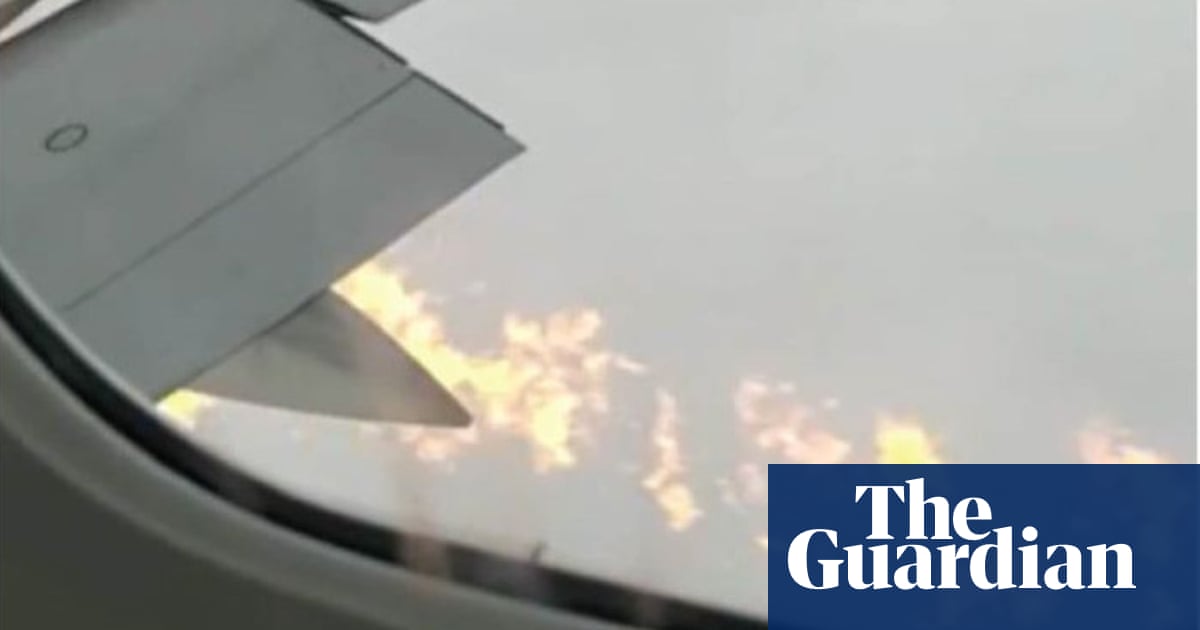Boeing faces fresh questions about the safety of its aircraft after an engine fire on a transatlantic flight from Edinburgh caused an emergency landing soon after takeoff.
Flames were seen by passengers briefly shooting from the engine of a Delta Air Lines 767 soon after it took off for New York in February last year, after a turbine blade broke off during takeoff.
The flames subsided while the plane was airborne but it made an emergency landing at Prestwick airport south of Glasgow, where ground crew noticed fuel leaking from the plane’s right wing.
The Air Accidents Investigation Branch, the UK government agency that investigates aviation safety, has written to the Federal Aviation Administration in the US asking it to take action with Boeing, which has its headquarters in Virginia.



Yup, most engine manufacture is undertaken by specialists. As a good example, Rolls-Royce is an airplane engine company that sometimes makes cars as publicity stunts.
HOWEVER.
It’s not just about who makes engines. Aircraft are meant to last a good 30 years in service and you can’t just ask some schmuck to clean it for $7.50 an hour and call that maintenance. Maintenance is extremely skilled work that tends to be operating under horrible time crunches, especially if a part is suspect and needs to have a plane partially taken apart so it can be changed for a fresh one- a plane that might be due to fly again tomorrow. Maintenance that needs that sort of knowledge tends to have some involvement with the parent company who built the planes, or is even contract work for them.
Boeing is rather notorious for being willing to put the schedule before safety- we’ve seen that in a lot of other accidents. I would absolutely believe that a Boeing manager skimped on engine maintenance because someone in the chain of command said “Get that plane out of the maintenance hangar today or you’re fired, and damn the safety regulations.”
But, that’s just my industry knowledge. The actual circumstances could be way different, so let’s go read the article.
OK, checking out the article, actually it seems totally innocent on the maintenance side of things- there was a turbine blade fracture during flight. Turbines are generally very reliable but it’s a gargantuan pain in the ass to test those blades because they’re crystalline structures, so a fracture goes from nanoscopic to taking out the whole blade all at once. I wouldn’t expect maintainers to catch that.
The criminal part is actually way more interesting and concerning.
Civilian aircraft are built to be safe. I mean REALLY safe. Every system has a redundant (backup) system you can switch to if that system goes down and a way to isolate a damaged system. Planes can fly on only one working engine, or even safely glide down to the ground if they have no engines. We literally blow some engines up in their final stages of testing to make sure they can’t blow up hard enough to take the wing out. Regulations demand it.
So that’s why this is a criminal case. Because after that engine blade came loose and hit the wing, it ruptured a fuel line…
In an aircraft that was designed in compliance with regulations, while this would still be be cause to turn around and land the plane, it shouldn’t actually be a safety problem at all. Just isolate the damaged system and switch to the redundant one. And they didn’t have the ability to do that. Meaning that their aircraft design itself is likely out of compliance with regulations and doesn’t meet the minimum safety requirements to have civilians on it. Which is… honesty way weirder, because who the hell signed off on this thing if it had a design issue like this?
Well, except for the wings. And the cockpit. And the fuselage. And its accompanying door plugs
Are you daft? Why do you think it has TWO wings and TWO doors? And clearly you’ve never been invited to the under cock pit, where they keep plugs fit for any hole.
(is joke don’t bite)
Not sure about the commercial planes, but some planes have a redundant wing.
https://theaviationgeekclub.com/time-israeli-air-force-f-15-baz-landed-one-wing-missing/
Boeing.
The FAA has been allowing them to self-certify some safety analyses. I don’t know if it was this model, or this kind of certification, but the FAA has definitely not been doing a thorough job.
Are you implying they are not metal? Or that their heat treatment makes them brittle? If it’s the latter, that’s clearly a defect. Metals can achieve high rigidity and still retain great resistance through heat treatment.
Of the top of my head, IIRC the blades in a turbine are grown into a single crystal of titanium so there’s no weak points between the crystalline structure.
Edit. https://www.theengineer.co.uk/content/in-depth/jewel-in-the-crown-rolls-royce-s-single-crystal-turbine-blade-casting-foundry
Not titanium, nickel alloy.
Christ on a cracker!
Metals are crystalline, and high stress loads associated with being rotated like crazy make things brittle. IDK how brittle though, steel normally is super stretchy if I remember my studies right.
That’s why I asked for clarification. The line about them being crystalline makes no sense. Copper is crystalline, and can be super malleable or quite brittle depending on the grain structure. And you just don’t use brittle materials for high speed rotating equipment. And there are non destructive tests to check for embrittlement/fatigue.
Metals are made of crystals, they usually defourm along the grain boundaries and fatigue cracks also grow along them. By eliminating those boundaries you reduce the chance for fatigue cracks and make the overall blade stronger.
What page did you see those details on in the report? I skimmed it between meetings and will look again later.